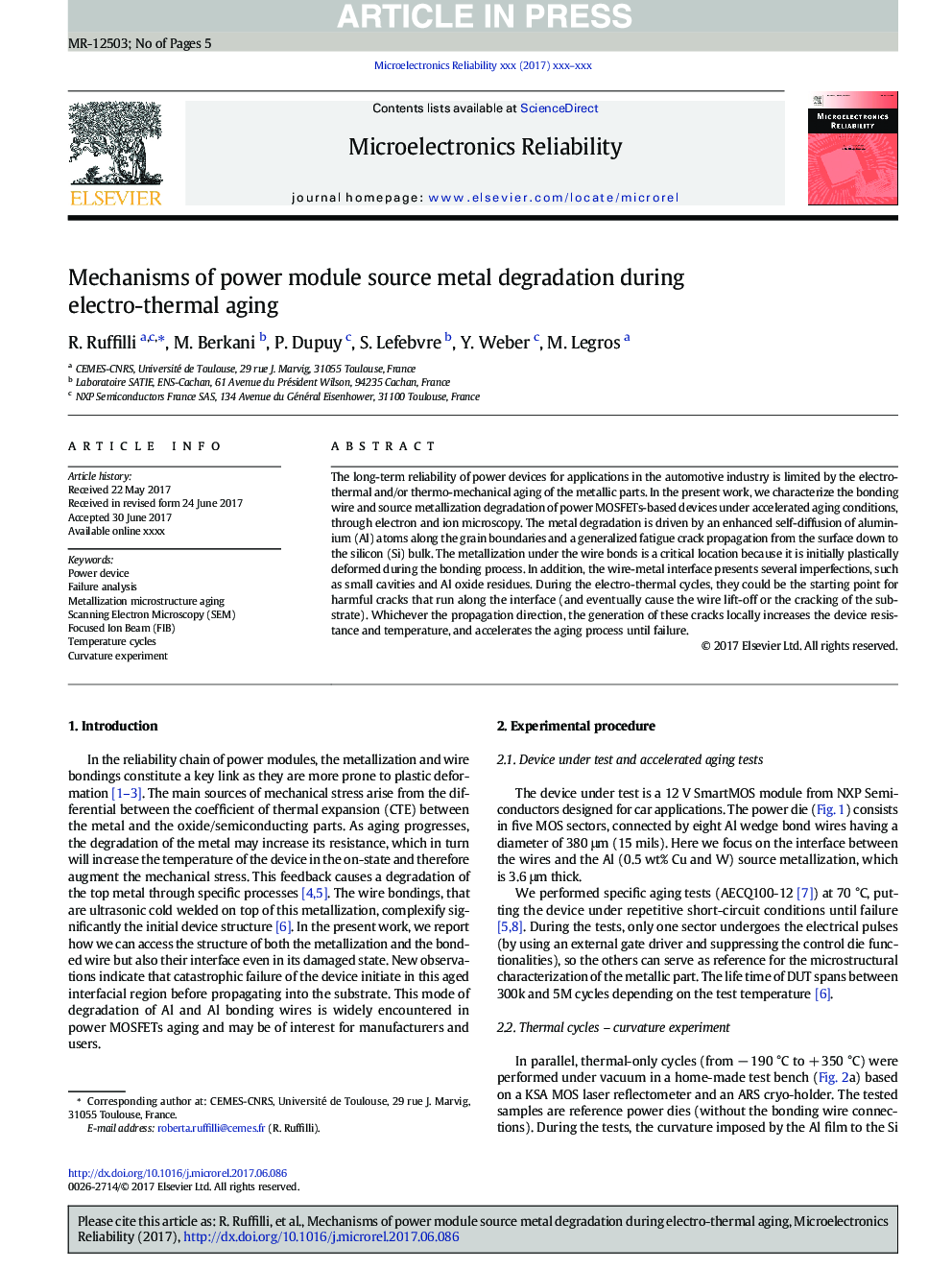| Article ID | Journal | Published Year | Pages | File Type |
|---|---|---|---|---|
| 4971655 | Microelectronics Reliability | 2017 | 5 Pages |
Abstract
The long-term reliability of power devices for applications in the automotive industry is limited by the electro-thermal and/or thermo-mechanical aging of the metallic parts. In the present work, we characterize the bonding wire and source metallization degradation of power MOSFETs-based devices under accelerated aging conditions, through electron and ion microscopy. The metal degradation is driven by an enhanced self-diffusion of aluminium (Al) atoms along the grain boundaries and a generalized fatigue crack propagation from the surface down to the silicon (Si) bulk. The metallization under the wire bonds is a critical location because it is initially plastically deformed during the bonding process. In addition, the wire-metal interface presents several imperfections, such as small cavities and Al oxide residues. During the electro-thermal cycles, they could be the starting point for harmful cracks that run along the interface (and eventually cause the wire lift-off or the cracking of the substrate). Whichever the propagation direction, the generation of these cracks locally increases the device resistance and temperature, and accelerates the aging process until failure.
Keywords
Related Topics
Physical Sciences and Engineering
Computer Science
Hardware and Architecture
Authors
R. Ruffilli, M. Berkani, P. Dupuy, S. Lefebvre, Y. Weber, M. Legros,
